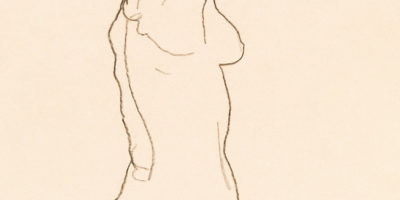Havurah Conference
HARTFORD, CONN.—Participants in this year’s National Havurah Conference and week-long Summer Institute, held at the University of Hartford July 2-5 and 6-12 respectively, acknowledged that, despite the considerable progress that has been made toward achieving equality between men and women in the Havurah movement,* much remains to be accomplished in this area.
The general consensus of members of an ad hoc group that met during the Conference to discuss feminist concerns in the Havurah community was that individual havurot treat women as equals for both ritual and communal purposes, and that the “excellent Conference” addressed many of the important issues. Yet they also pointed out that a considerably higher proportion of men than women served as Conference instructors and group leaders, and that women attending the sessions were generally reluctant to express their opinions, while their male counterparts participated actively in the
“The nation-wide network of small Jewish fellowships (generally numbering ten to thirty members) which meet regularly for prayer, study, meals, social activities and, often, cooperation on political/social action projects, many lively discussions.
Members of the ad hoc group, who reported on their discussion at the Conference’s closing plenary session, urged that next year’s Conference aim for a 50/50 ratio of men to women in leadership positions. In addition, they recommended that the Conference program include discussions of sexism in the larger American Jewish community, as well as means of encouraging women to participate equally with men in all havurah discussions and activities. “We must recognize the need for women to push themselves to speak out, and we as a community should facilitate this,” said one Conference participant.
These concerns were echoed by Jewish feminists attending the Havurah Summer Institute later in the week. According to a report by David Szonyi in the Long Island Jewish World (July 31-Aug. 6,1981), a group of eight women issued a joint statement that read, in pa rt, “We are a group of Jewish feminists who came together out of a desire that our spiritual concerns be taken seriously within the Jewish community . . . Through our confrontations with issues of spirituality, we realized that if we are to strive for spiritual fulfillment, we must address those obstacles which prevent our full participation in the Jewish community . . . We have made some progress … in the Havurah community; we are counted in the minyan and accorded equal access to positions of communal responsibility. Some of us are even teachers. But we have come to recognize that equal access is not enough. We come to you, our community, to share our concerns and our beliefs that the struggle for full equality of women within the Jewish community must engage us all in a fundamental transformation of many elements of Jewish life.”
The statement emphasized the need for Jewish education, especially in Jewish history, to include the “experience and concerns of women;” the creation of “new modes of religious expression which incorporate both the femaleness of God and the experiences of female Jews”; the Jewish community to affirm and support those who are single, those who live communally, those who are single parents, and those who choose to love persons of their own sex; and “every Jewish community” to make “high-quality, nonsexist day care … a top priority.”
Both the Conference and the Institute featured many sessions dealing with women’s issues, several of which focused on the current status and future of the Jewish family. For example, Conference sessions addressed such topics as: “The Jewish Family,” that assessed the impact of late marriage, low birth rates and higher rates of assimilation and intermarriage on the contemporary Jewish family; “Are There Any Good Jewish Men Left?”, a look at single Jewish men and women; “Children—To Have or Have Not”, that reviewed the “personal, social and Jewish values in having or not having children,” as well as whether the responsibilities of motherhood conflict with feminism; “Halacha (Jewish law) on Marriage and Divorce”; and “The Contemporary Jewish Woman in America,” that dealt with “traditional women, single women and stereotypes about Jewish women.”
The well planned Conference combined prayer (providing many alternative types of services); study of traditional Jewish texts; formal and informal discussions of personal and communal concerns as well as organizational issues, such as how to launch and maintain havurot and the future of the havurah movement; an inspiring Shabbat celebration; skills workshops (e.g. in leading services, and reading and recreational activities. In addition, Conference participants re-enacted the historic Academy of Sura (a Babylonian Talmudic academy of 3rd to 10th centuries) by preparing and debating traditional texts on three major issues: “Is Triage in Consonance with Jewish Tradition?”;”The Conflict Between Honoring Parents and Honoring the Wishes of a Spouse”; and “The Rights of the Majority versus the Rights of the Minority.”


